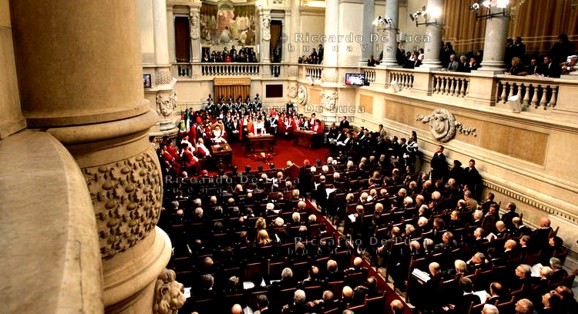
Wednesday, April 03, 2013
The Real Catastrophe For The Defenses That Was The Chieffi Supreme Court Ruling
Posted by Machiavelli
1. Overview
On Tuesday March 26, nine judges of the Rome Supreme Court of Cassation led by the respected Dr Chieffi quashed the previous acquittals of Amanda Knox and Raffaele Sollecito for the murder of Meredith Kercher.
The Supreme Court annulled almost the entirety of the 2011 Hellmann-Zanetti appeal verdicts, declaring the appeal outcome completely invalid on five of the six charges. The Court only upheld the sixth charge which made definitive Knox’s conviction for calunnia for which she had been sentenced to three years.
Calunnia is the crime of maliciously placing false evidence or testimony against an innocent person, something the Italian Criminal Code considers not as criminal defamation but as a form of obstruction of justice, a more serious offence.
Worse for Knox, the Court annulled a part of the appeal verdict which had dropped the aggravation known as continuance, the aggravation that acknowledges a logical link between the obstruction of justice and the murder charge.
2. First reactions
Once the dust has settled, the defendants and pro-Knox and pro-Sollecito supporters and defences may finally realize how severe a defeat has been dealt to their side.
Most American journalists were completely unprepared for and very surprised at the outcome. But most Italian commenters and a very few others elsewhere considered the outcome quite predictable (the criminologist Roberta Bruzzone for example hinted so in written articles, so did Judge Simonetta Matone, as well as John Kercher in his book, and many others too).
This really is a catastrophe for the defences. A complete annulment of an acquittal verdict is just not frequent at all. They do occasionally occur, though, and this one appeared easily predictable because of the extremely low quality of the appeal verdict report.
For myself I could hardly imagine a survival of the Pratillo Hellmann-Zanetti outcome as being realistic.
I previously posted at length on the Galati-Costagliola recourse (that is an important read if you want to understand all angles of the annulment). I argued there that a Supreme Court acceptance of the verdict would have so jeopardized the Italian jurisprudence precedents on circumstantial evidence that it would have become impossible to convict anyone in Italy at all.
The previous appeal trial obviously violated the Judicial Code as it was based on illegitimate moves such the appointing of new DNA experts for unacceptable reasons. It contained patent violations of jurisprudence such as the unjustified dismissal of Rudy Guede’s verdict on a subset of the circumstantial evidence. Hellmann-Zanetti even “interpreted” the Constitution instead of quoting Constitutional Court jurisprudence.
They omitted a number of pieces of evidence, literally “forgetting” them or dismissing them without providing an argument (they should have, being an appellate trial based on the previous findings and arguments of the lower court). The appeal trial had obvious illogical contradictions on a macro level, such as the contradictory putting together of the conviction for calunnia and the acquittal on the murder charge (ignoring a logical link required by statute without introducing any reason at all).
The Hellmann-Zanetti verdict was also based on an illogical processing of all pieces of evidence (such as the dismissal of Nara Capezzali’s evidence without logical reason, even after calling her “credible,” and that of Quintavalle; and attributing the bloody footprint to Rudy Guede on the basis of some ludicrous reasoning).
The appeal verdict basically ignored the concept of “a contrario” evidence, like concluding that the luminol footprints are probably not in blood but in some other substance and not related to the murder (despite failure to indicate any alternative substance nor any reasonable scenario).
The verdict was also biased with open prejudice in favor of two of the suspects in assuming they would be unlikely to even socialize or hang out together with the third, based on social or racial discrimination (two whites from good-looking families are called “good fellows” while the third is “different”).
Beyond the glaring, major faux pas in procedure, the verdict’s low quality, unlawfulnesses, and hypocrisy in its reasoning tended to be pervasive and obvious through all its paragraphs, and possibly this also could have caused an aura of distrust toward the work of the Hellmann-Zanetti court.
One could assess the strikingly low quality of the appeal verdict especially by comparing it to a sophisticated recourse such as the 100-page Galati-Costagliola Supreme Court appeal. While nobody could anticipate with total certainty the Supreme Court decision between the Galati-Costagliola appeal and the Pratillo Hellmann-Zanetti appeal verdict, to good legal eyes the outcome would be as uncertain as the result of an England versus San Marino football game!
EACH of the eleven single mistakes, plus EACH of the six “method” mistakes pointed out in the Galati-Costagliola recourse could by itself have been a sufficient cause for the annulment of the acquittals.
The redundancy of reasons and remarks by Cassation sheds light on the judgment shortcomings from many different angles, and all the reasons presented for the recourse were certainly assessed by the Supreme Court.
But on the practical side, most probably the Hellmann-Zanetti verdict did not even survive beyond the first mistake. The appeal verdict most likely crumbled completely from the very beginning on reason #1, the illegitimate appointing of new experts by Hellmann-Zanetti to re-examine the DNA.
But even given that the defences’ defeat could be foreseen, I never expected the defeat to pervade to this extent.
I thought the appeal verdict might be quashed entirely and a new appeal would start from scratch. But the Supreme Court went further and decided to “save” only the parts of the verdict that were unfavorable to Knox, and declared her conviction for calunnia definitive.
Meanwhile, the Court accepted the Calati-Costagliola reason #10, and quashed the part that denied a logical link between calunnia and murder.
The Supreme Court thus sends Raffaele Solecito and Amanda Knox back to appeal trial, but this time Amanda Knox will enter the trial as a felony convict with a definitive criminal record, which ““ the Supreme Court hints ““ is to be considered logically linked with the charge of murder.
Moreover, judges in the appeal that will come next in Florence will have to follow the decisions set by the Supreme Court. Since the Supreme Court’s motivations report has not been issued yet, we still don’t know what points exactly Cassazione will make. But we can expect that several arguments used by Pratillo Hellmann-Zanetti that were “needed” to acquit Knox and Sollecito will be now declared illegitimate.
This might mean that we will not see for a second time such faulty reasoning as “Knox’s statement can’t be used as evidence of lying because it is not true.” It may not be possible to dismiss the verdict that found Guede guilty of concurring in murder “with others” from the set of evidence just because it was “weak.” It may not be possible to deduce the time of death based only on declarations of Rudy Guede.
We also may not have a chance to again see an expert declaring that contamination is “likely” on the sole basis that “everything is possible.” We also may not have another judge attributing footprints without talking about any measurements.

The Supreme Court session began on March 25, and it is only a rare event that a Cassazione session extends over into two days.
The first criminal division of the Supreme Court ““ scheduled to decide on this case ““ was a five-judge panel presided over by Dr Severo Chieffi. His name never did sound like a particularly favorable omen for Knox and Sollecito. Dr Chieffi is a 70-year-old judge, known for being the author of a famous 2008 verdict which definitively closed a notorious criminal case (“the first time a Cassazione hearing attracted massive live media attention”), a verdict among the most quoted in jurisprudence which is known as that “on reasonable doubt.”
Dr Chieffi and his nine-judge panel explained reasonable doubt as to be intended as an “a contrario” concept, the concept used to formulate a logical reasonable alternative. That verdict pointed out the concept of “reasonable” and also stressed that the nature of evidence is “logical”. “Reasonable” depends only on the plausibility of alternatives, not on how conclusive or reliable single pieces of circumstantial evidence are, and a piece of evidence does not require any specific “physical” element or conclusive quality.
The rapporteur judge was Dr Piera Maria Severina Caprioglio. The rapporteur judge goes through the papers of the whole trial and summarizes their content to the other panel judges; the rapporteur and the president are the two who physically write the report (it may sound like irony that both judges have the adjective “severe” in their name). I was told Dr Caprioglio was a rather stiff judge, known for her scrupulosity in procedure matters, and she is also a specialist “and hard liner“ about sexual crime (maybe that’s why she was chosen by Dr Chieffi as the one to do the research on this case).
At the Supreme Court there is also an office known as the Office of Procurator General, which has more than 50 magistrates. The Procurator General appoints a magistrate (normally called the “PG”) to study cases and to make arguments on all cases dealt with in Supreme Court sessions. The PG is considered “neutral” in the sense that their office represents no party only the “precedents” of the court. While the rapporteur makes a description of the case, the procurator makes arguments about the recourses submitted by the parties.
At 10:30 am on Monday, Judge Caprioglio begun her 90-minute speech summarizing the case. She detailed legal events that led to the first Massei-Cristiani verdict, and then the appeal trial led by Hellmann-Zanetti and their verdict.
She sounded rather neutral; hers was a sheer summary with no comment attached. Nevertheless, it sounded most ominous for the defences: right from Dr Caprioglio’s speech, in fact, Knox and Sollecito’s attorneys understood that they were going to lose.
This is because Dr Caprioglio devoted half of her rapporteur time or more to detailing Massei’s first degree trial and verdict, explaining the arguments and evidence used by the Massei court. Such attention was itself ominous to the defences.
A main basis of the Pratillo Hellmann-Zanetti verdict is in fact a series of denials about the work of the lower court, in which plenty of evidence was simply ignored or dismissed without dealing with the first degree conclusions; while the strategy of Giulia Bongiorno was to entirely “replace” the details of the evidence set with a self-made narrative, quite unattached to actual trial events, which somewhat “worked” as rhetoric and in the media.
Yet Dr Caprioglio was not yet the biggest problem facing Knox and Sollecito. The defence was about to face a pincer front, because the Procurator General’s offices did not appreciate the appeal verdict at all.
A bomb went off with the speech of Procurator Riello which followed next.
Dr Riello recalled the points of recourse submitted by Galati-Costagliola, which may sound technical or subtle to those unaccustomed to them. Dr Riello endorsed the radical censures made by Galati-Costagliola and made clear his own view in an overview of the whole verdict. His arguments had the subtlety of an anvil.
To summarize, he basically maintained the appeal judges had conducted an appeal trial as if they were idiots, and followed the paths of logic, procedure and law like sailors without a compass.
Seen from the point of view of the Procurator General, their way of conducting the appeal trial itself was like a journey through a dreadful series of unlawful steps, decisions informally taken without deliberation, and arbitrary and unjustified ordinances. The court simply “lost their way.”
In the body of their findings, it seems they understood almost nothing about the evidence ““ in particular about how circumstantial evidence works. They did not deal with the findings and arguments of the first instance court as they should have, as if they didn’t exist, and they trivialized the previous legal material.
In fact Dr Riello sounded almost sarcastic; outraged by the incredibly amateurish work of this appeal court, he tended to detail the merit of questions and was interrupted by the president asking him to stick to the discussion on the table.
At the close of his speech, he called the appeal verdict “a rare concentration of law violation, a monument to illogicality.” He said “the judge of merit lost their way in this trial.” Dr Riello noted “they fragmented, they parceled out the pieces of circumstantial evidence.”
He implied not only incompetence but a kind of disingenuous attitude: “The Court employed a fair dose of snobbism for trivializing the first degree verdict, reducing it to four elements. A very imprecise and superficial synthesis.”
He went beyond the criticism expressed in the Galati-Costagliola appeal when he described an obvious bias of the appeal court “not in just a few passages of the second instance verdict ““ it’s as if the defendants should benefit from a kind of anthropological and cultural immunity, in relation to the events.”
He criticized Pratillo Hellmann’s dismissal of Amanda Knox’s handwritten memoir, and recommended that a new appeal trial must in part be based on that statement as “it is a usable document”; and he stressed that in his opinion “the scream heard by Amanda is a significant datum, of great importance.” The behavior claimed by Knox on the morning of November 2, 2007 in his view was “chilling” and her taking a shower in a cold bathroom is a “chilling detail.”
Dr Riello concludes by saying: “These are all conditions for not letting the curtains close on an upsetting and extremely serious crime for which the only culprit found up to the present day is Rudy Hermann Guede, who has been addressed through a Lombroso-style assessment, either calling him a thief, a criminal or a drifter. He didn’t confess and he was not convicted by another court for concurring in a crime together with others, maybe with ‘ectoplasms.’” (A reference to Cassation’s previous decision that he did commit the crime with others, but Hellmann-Zanetti identified no other people; hence ‘ectoplasms.’)
The Prosecutor General also dealt with the DNA experts’ report which defined the previous results as “unreliable.” He implied that the report and its language were used as a pretext by the defences “as a tombstone, while in fact it is not.” It was used as a tool to focus the trial on the DNA and steer it away from the whole evidence set, to “bury the set of pieces of circumstantial evidence which all have their vital value.”
The rhetoric of the defences aimed to “blame everything on those involved in the scientific police who are almost depicted as bunglers; however they are not brigadiers playing with toy chemical sets, they are in fact a highly qualified department and they do employ cutting-edge technologies.”
A severe legal bashing like the Riello speech is not at all common at the Cassazione. As I heard the news on the radio, law experts commented that the event was unusually serious, and they hinted that its consequences may lead to the setting of a historic jurisprudence precedent.
Francesco Maresca ““ who brought his mentor Vieri Fabiani with him ““ endorsed the recourse points and made points similar to Dr Riello’s. He pointed out that a major flaw of the appeal trial was to focus on two DNA instances as if the case was based on them. The court appointed experts to review items with no legitimate basis, they provided an inconsistent explanation for their steps, and then they refused to analyze and introduce further evidence, totally contradicting themselves and also violating the code.
Their criteria for choosing which piece of evidence to discuss or review were totally contradictory, and their series of steps egregiously violated a series of procedural conditions that any court is supposed to follow.
The analyzing of the knife DNA sample and bra clasp sample as pieces in isolation is a sort of device that serves a defence made-up narrative; the focus on “disputed” items and the re-make of a narrative about legal events is simply a defence strategy which is aimed at the media rather than official court proceedings. For the Kercher family, the evidence points to the guilt of Knox and Sollecito beyond reasonable doubt.
The evidence, explained Maresca, consisted of numerous pieces of evidence and reasoning, that were simply not dealt with by the appeal court. The whole process was “non-transparent” and the result is also contradictory given that Knox is indicted by her own words on the crime of calunnia.
Maresca explained that the appeal verdict is riddled with many flaws and errors in the merit of the facts which cannot be assessed by the Cassazione court, but there are also patent violations of law which are “strong and obvious” and of the most serious kind.

Then it was the defence attorneys’ turn. Giulia Bongiorno knew she would need to apply the full power of her best rhetorical skills: she pointed out a factual error in the recalling of Prosecutor Riello and threw herself head-first into the merit of the evidence.
She even made FOA-style overstatements on the number of Guede’s DNA instances: “So many genetic traces of Rudy Guede were found in the bedroom of the murder, Amanda and Raffaele’s DNA would have been found too if they had been there.” (Her claim is false: in fact, only four samples yielding Guede’s DNA were found in the bedroom, and some were very scant.)
Bongiorno focused on investigation mistakes and complained that Raffaele Sollecito “was put in jail because of a shoe print found beyond the duvet which covered the body, a print that was attributed to Guede.” She also commented on Knox’s handwritten memoir and again put forward the claim ““ already rejected by all the judges of all instances ““ that the statement should be “not usable” because there was a “blackout” of defendant guarantees. Apparently, Bongiorno did understand that the most dangerous threat, and the actual battleground, would be about the danger of having Knox now definitively convicted for calunnia.
Bongiorno said “we do not want to put the scientific police on trial” but then said the point defence demonstrated was that they made “an infinite series of errors.” In fact, Bongiorno’s speech largely consisted of the well-known defense stance of pointing the finger at a list of supposed wrong-doings by the police.
Bongiorno’s argument of pointing out supposed “police mistakes” would probably ring true to Knox’s Amarican supporters, who may find these arguments convincing and effective.
In fact, it was obvious that Bongiorno’s position was extremely weak, and that her arguments were not going to have any effect. The weakness of Bongiorno’s arguments was obvious from the start because she backed into arguing the case only on the merit of investigation techniques.
Her arguments would maybe resonate effectively with uninformed spectators, but they had already failed in those courts that were legitimate, and they have no consequence from a legal standpoint. Talking about supposed mistakes during the investigation and supposed bad behavior of police are good to build a narrative for journalists, but they would have zero effect on expert judges.
I think she knew she was going to lose, but besides being a lawyer, Giulia Bongiorno is also a smart public person, and she plays in the public arena as well as in a court of law at the same time. Her technical stances are all wrong, but she knows she will be remembered well for her good-looking performance.
The president did not interrupt her, showing due politeness toward the defence attorneys. But no attorney would convince the Supreme Court by simply saying “we demonstrated that the investigators made mistakes.”
In order to seek to obtain some positive effect, she should have argued in favor of the Pratillo Hellmann-Zanetti appeal verdict on points of law, and put forward arguments for their legitimacy; for example, an argument in response to point #1 of Galati’s recourse claiming that the appointing of DNA experts was unmotivated.
Luciano Ghirga and Carlo Dalla Vedova had to take care of their own recourse against the conviction for calunnia on the false accusation of Patrick Lumumba. Their line of defence on this point was the same ““ and could be nothing else ““ than what they maintained though all the previous instances. Dalla Vedova deals with the handwritten note where he understands “Amanda says she is confused, she does not care about what she said.”
They reintroduced the myth that “she had been interrogated by the investigators for 54 hours.” They explain ““ almost a paradoxical argument ““ that the document was “a defensive paper” while then becoming one of the elements on which the charge of calunnia was built. They stressed that “she wanted to cooperate” with the investigation and that “she was a friend of Meredith.”
A failure of their arguments was easily predictable because their recourse was built on points that had already failed at lower instances. Some time ago before this appeal, I posted this criticism of the Ghirga-Dalla Vedova recourse on Knox’s calunnia conviction to the Supreme Court:
Pages 3-11: The first argument is about the non-usability of the evidence for the crime of calunnia.
Such an argument is basically the re-proposal of the same argument that had been already dismissed by the Supreme Court in 2008, and subsequently by Massei-Cristiani in 2009 and also by Pratillo Hellmann-Zanetti. Therefore, it is an especially weak argument. Ghirga-Dalla Vedova do attempt to use it again at the Supreme Court because it is what they have.
Just like Giulia Bongiorno will likely recall it too, just like she attempted to request of nullification of Stefanoni’s testimony on procedure grounds before Massei, which was rejected again by Hellmann-Zanetti (the Knox supporters have such a spun perception of the proceedings, they apparently don’t see how some basic defensive claims were rejected by all judges).
Pages 11-14 complete the first argument, addressing the further requirements of the crime of calunnia (maliciousness and voluntarity).
Basically, this point contends that the false accusation was not voluntary or not malicious. The only usable point in my opinion in this reasoning consists of one line, which recalls that Hellmann-Zanetti did not acknowledge the aggravation of continuance for the crime of calunnia. But this point has no consequence because it is a weak point in Hellmann’s verdict itself which violates jurisprudence and logic itself.
The other claims at this point are basically useless; they attack the Hellmann verdict in a way peculiar to the prosecution appeal with an opposite stance. But in fact “not knowing” that someone is factually innocent obviously cannot be extended to an absolute meaning; Hellmann is illogical on that, because he dismisses the logical link with the murder without explanation.
Pages 14-18 speak about the alleged “extreme exhaustion” of Knox in order to exculpate her of her confusion and falsehood.
This argument tends to be a stronger attempt to use some of the contradiction in Pratillo Hellmann-Zanetti, using as a starting point the fact that H-Z did state that Knox was allegedly under excessive pressure. They convicted her for calunnia nonetheless. I think this argument won’t go too far, for two reasons.
First, because it’s basically on the merits; it quotes the whole writing of Knox and requests the SC to directly re-assess the sincerity of her words, something which the SC are unlikely to do.
Second, because while on the one hand there is a contradiction in H-Z as they accuse her of calunnia but do not use her writings as an evidence of lying on the other crime, and they reject the continuance despite the obvious link between the calunnia and the murder, on the other hand the contradiction addressed by Ghirga is weaker. There was in fact no factual finding about “excessive pressure,” neither in the H-Z appeal trial nor in previous Massei testimonies.
As for jurisprudence, pressure and “psychological alteration” itself is not enough to cause a loss of mental faculties to understand and will. Basically, most crimes are committed in a state of psychological stress or alteration, and people are responsible for themselves notwithstanding. The faculty to understand and will is not a psychological condition; it is something that affects the cognitive and decisional functioning of the brain on more basic functions, and requires a medical assessment.
So there is no way the argument of Ghirga-Dalla Vedova can overturn a conviction for calunnia based on an argument of psychological conditions: they have no basis; and there is no consistent ground to assert “excessive pressure” either.
Pages 19-20 is a very short argument about two articles of the code that Ghirga puts in in relation to a case of defensive rights.
This is an argument I am unable to assess clearly. This point basically claims Knox is somehow protected by the law because of an extension of her rights of defence. I have the feeling this point is wrong, because the boundaries of the right to defend oneself are already fixed and limited by a SC ruling of 2008, and because Article 51 only applies to what she declared as a defendant, but not to what she declared as a witness.
Pages 20-22 is only about the sentencing and not about innocence; it claims that, anyway, even if Amanda is guilty of calunnia, the punishment was too stiff and this severity was not logically motivated by Hellmann. This point is the only that could stand, in my opinion.
After the hearing of March 25 ““ which was the ninth case the Supreme Court panel dealt with that day ““ the panel deliberated for six hours, then adjourned the hearing and scheduled the final decision for the following morning.
The question whether to annul the verdict entirely, or to confirm the calunnia conviction, might have been the cause of some of the extra time needed.
When the Supreme Court has to deal with scheduled cases the relator puts a mark ““ between 1 and 8 ““ indicating the difficulty of the case: 1 is the easiest and 8 is very complex.
Almost all recourses are below 3, while a case like the one on the Narducci investigation a week earlier, involving Mignini, could have been closer to 8. The difficulty of this case is unknown. But because of some sensitive jurisprudence involved and because of the articulation of the recourses, this could have been around 6 or higher.
After retirement of the court, and adjournment to the subsequent day, at 10 am on March 26, the court’s dispositivo was the following:
ENDING THE RESERVATION FROM THE HEARING OF 03-25-2013, [THE COURT] DECIDES AS FOLLOWS: ANNULS THE IMPUGNED VERDICT, LIMITED TO THE CRIMES UNDER CHARGES: A) (INTO WHICH CHARGE C) IS ABSORBED), B), D), E), AND TO THE AGGRAVATING CIRCUMSTANCE UNDER C.P. ART. 61 NO.2 IN RELATION TO CHARGE F), AND REMANDS [THE CASE] TO THE CORTE DI ASSISE DI APPELLO OF FLORENCE FOR A NEW TRIAL. REJECTS THE APPEAL OF AMANDA MARIE KNOX, WHOM IT SENTENCES TO THE PAYMENT OF COURT COSTS AS WELL AS REIMBURSEMENT OF EXPENSES INCURRED IN THE PRESENT PROCEEDINGS BY CIVIL PARTY DIYA LUMUMBA, IN THE AMOUNT OF 4000 (FOUR THOUSAND) EUROS, IN ADDITION TO I.V.A. AND C.P.A., PLUS GENERAL EXPENSES ACCORDING TO LAW.
Thus, Amanda Knox and Raffaele Sollecito are sent back to appeal trial in Florence on all charges related to the rape and murder of Meredith Kercher (a, b, c, d, e). And Knox is definitively declared guilty of the obstruction of justice charge known as calunnia, while the argument denying any logical link between the calunnia and the murder is quashed.
Resources used
The article above draws in part upon a translation into English of news information published by various Italian press sources, which our readers may like to look at directly. A good coverage of the case ““ including Riello’s speech ““ was broadcast by RaiNews 24 and they also have a lot of information on the website. Online updates were provided by Televideo. Commentaries and discussions were hosted on Radio1 - GR Rai. Dr Riello’s comments were reported by Il Fatto Quotidiano and Style.it. There were reports on Libero Italy.it. Also details and chronicles were reported at the end of the day by Il Giornale dell’Umbria. Coverage and the quotes for March 25 were provided by AGI. The dispositivo official document was obtained and published by Andrea Vogt.
Tuesday, April 02, 2013
A Growing Number Of Commentators Are Objecting To Overexposure Of The Two Still Accused
Posted by Peter Quennell

We have a series of posts coming up that will describe in detail and analyze the outcome of the Supreme Court.
At least one post will be a roundup of the media. Noticeable this time was less of a tendency to lionize Knox and Sollecito. Some articles and TV reports flipped for Knox, but none did for Sollecito.
And some editors and reporters have weighed in strongly for better balance. David Barrett of the Daily Telegraph wrote this one.
The impending retrial for the murder of British student Meredith Kercher fills many court-watchers with dread, myself included.
Details of the crime are horrific enough. But during the lengthy court processes which we have already witnessed, my discomfort was intensified by the obsession with Amanda Knox.
The photogenic young American, now 25, was convicted and then acquitted of the 2007 murder. She received more sympathy than most suspects who have ever stood in the dock on such a serious charge.
The media pack which followed the Italian trial would often comment on Knox’s apparent frailty; the “stress” she was suffering or whether she looked “pale”. It made me gag.
It’s a difficulty with which any professional and humane court reporter is familiar: how do you keep the victim, who is absent, visible in the very human drama that is a murder trial?
Is it appropriate to pay more attention to the suspect than to the issue at hand; namely, securing justice on behalf of a person whose life has been taken from them? I say it is not, although I can understand why it happens….
When the Italian prosecutors again attempt to secure a conviction for that tragic murder in Perugia we will have to get used to seeing Knox’s face on a daily basis once more. But let’s ensure that Meredith remains at forefront of all our minds.
.
Monday, April 01, 2013
Alarm Bells Ignored: Overconfident PR And Lawyers May Have Led To That Shock At Cassation Outcome
Posted by Our Main Posters
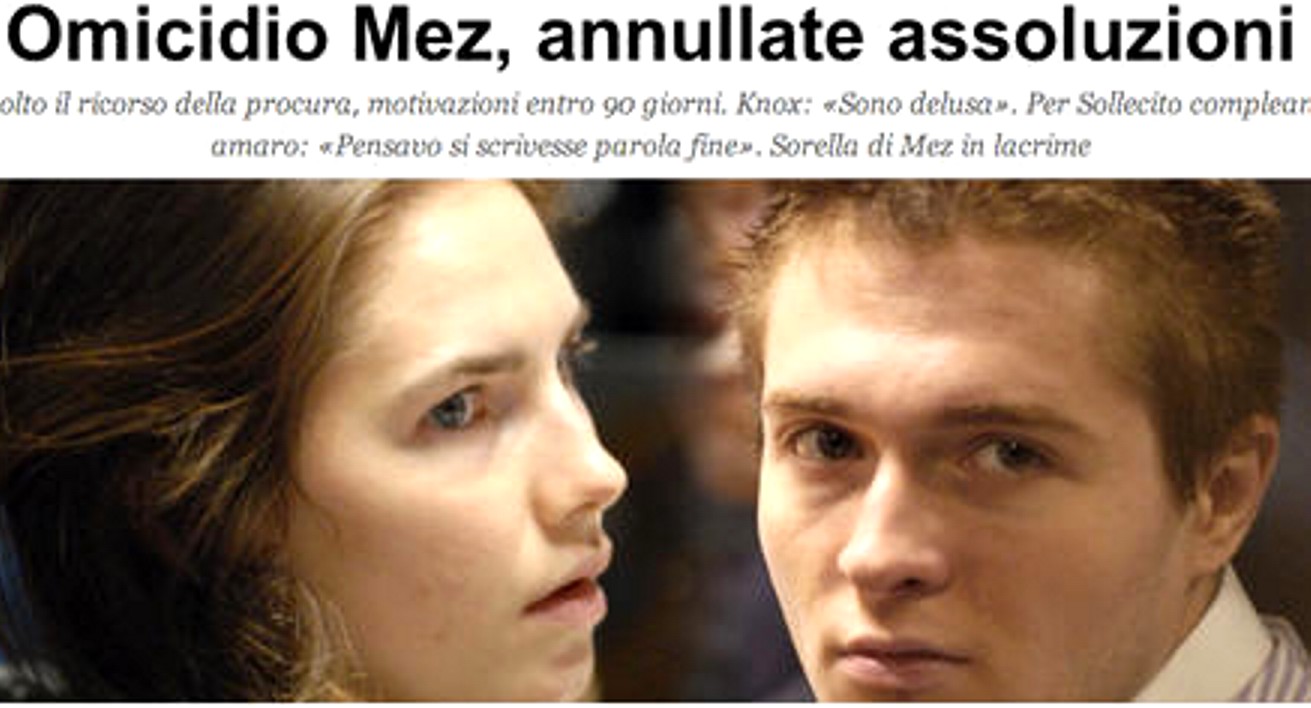
Amanda Knox has seemed to us more stunned than confident since she got out of Capanne. Her father mentioned that she was not given the whole picture there.
But we have been surprised in recent weeks at how the defense lawyers and spokesmen and especially Raffaele Sollecito and Giulia Bongoirno and Carlo Dalla Vedova and the PR flunkies were seemingly seeing the Supreme Court appeal as a forgone conclusion in their favor, a blip requiring no change in the end game.
Here are 20 warning bells that we think they might have missed or heard wrongly which contributed to a shocked and ill-prepared reaction to the Cassation ruling, and each of which a team of hard-nosed lawyers not befuddled by PR might have heard and responded to quite differently.
- 1. The Italian media in 2007-2008 in fact did not blow the case and Knox herself out of all proportion. Most of the lurid headlines appeared in the UK press where they had zero effect on the 2009 jury. There really was a hard case to answer.
2. The British and American media mostly came to be manipulated on the lines Barbie Nadeau’s book described, which meant a big contrast opened up between hard Italian reporting and fantastical UK and US reporting.
3. The Knox and Sollecito teams shrugged off a short-form trial in October 2008 at which point they might have pleaded that Meredith’s murder was not intended and drugs and mental quirks had resulted in a terrible but unintended outcome, perhaps providing relief both for themselves and Meredith’s family.
4. The prosecution part of the trial in 2009 was in fact, contrary to frequent illusory claims, fast and comprehensive and decisive, and it may have been at the end of that phase that the jury was already ready to vote guilty.
5. The defense part of the trial was far less successful with Amanda Knox on the stand suggesting to Italians that she was cold-blooded and uncaring, and from then on the defenses were desultory and dispirited with no strong points ever landed. Several days one or other of them failed to show.
6. The prosecution summation at end of trial was extremely powerful and included in it was a very convincing 15-minute crime-scene recreation video (never released to the public) which accounted for all the marks and stains in Meredith’s room and on her body by an attack group of three.
7. The Massei report, again contrary to frequent illusory claims later, was considered by those familiar with such reports a model of good logic and reasonable assumptions. It laid out and connected hundreds of evidence points which in a normal appeal process would have been unassailable.
8. The 2011 appeal did not happen because Massei was riddled with legal errors and wrong assumptions, which would have been the criteria for any British or American judge to agree to such an appeal. It happened solely because, unique to Italy, such appeals are automatic if demanded, resulting in a huge number of appeals on weak grounds.
9. Italy does not have a terrible record of trial reversals as some claim. It has a record of fine-tuning and adjustments of thousands of appeals by appeal juries seemingly wishing to prove that they are being diligent. Cassation is aware of this quirky systemic effect, and it often bounces back appeal outcomes to dead center.
10. It had appeared that the PR effort was joined by a lot of influential “heavies” including MP Girlanda, Judge Heavey, Senator Cantwell, Joel Simon of CPJ, and the billionaire Donald Trump. Most had limited positive effect in the US and less in Italy, and have been quiet since the Cassation ruling.
11. Judge Hellmann was a surprise replacement for Judge Chiari, then the able and experienced head of the criminal division. (He resigned over this.) Judge Hellmann, a good civil judge, had very limited criminal-case experience. Chief Judge De Nunzio has not explained why he replaced Chiari .
12. The scope of appeals is carefully laid out in the Italian judicial code, and they are not to be repeat trials with overall reconsideration of all evidence and al witnesses only absent the careful presentation process and cross-examination at trial. In the US or UK the defense grounds for appeal might simply have been rejected.
13. Prosecutor Mignini was provisionally convicted in March 2011 of abuse of office, but careful examination would have revealed that the grounds were spurious and he had no need of a conviction in this case. Cassation in the past month has killed his own case terminally and chastized those who brought it.
14. Incriminating DNA was found in Meredith’s room and also outside it in many locations, and also on a knife in Sollecito’s apartment. DNA consultants were “illegally” appointed who muddied the waters but decisively disproved none of it.
15. The Supreme Court is on record as deciding that three perpetrators attacked Meredith. The defenses never set out to prove Guede was a lone wolf attacker, for a long list of reasons, and they failed to prove that jailhouse witnesses Alessi and Aviello had pointed out credible alternatives.
16. The Hellmann-Zanetti report surprised a majority of Italian lawyers who read it for its passion and broad scope and tendentious logic, and for misunderstanding certain key legal concepts. Some instantly saw it as having feet of clay, and a pretty sure candidate for reversal.
17. The significance of Chief Prosecutor Dr Galati in the process seemed seriously discounted. UK and US media mostly ignored his appointment and where he came from, which was in fact Cassation in Rome where he was a highly effective Deputy Chief Prosecutor.
18. The Galati appeal itself was extremely competent and hard line and targeted the Hellmann appeal outcome in several levels or layers in a total of ten points. It is one of the toughest and most sweeping appeals ever filed in Italy, and in the US or UK alarm bells really would have gone off at this one.
19. Sollecito’s book was seemingly okayed by his lawyers, although it causes them major complications in three respects: it introduces new “facts” which contradict his own defense; it derides Italian officials and accuses them of crimes; and it looks like a seedy attempt to make money out of a crime for which the writer is still on trial.
20. While Sollecito had been acting happily oblivious and super-confident in recent months, he has added to Amanda Knox’s own problems by semi selling her out in his book, and by waking the new 800 pound gorilla of contempt of court prosecutions for not respecting the judicial process.
It may not surprise you to learn that Giulia Bongiorno has not had a very winning record at Cassation, and as far as we know the other lawyers have no experience of winning there at all.
Wednesday, March 27, 2013
Getting Media Up To Speed With Hard Facts Of Complex Case
Posted by Media Watcher
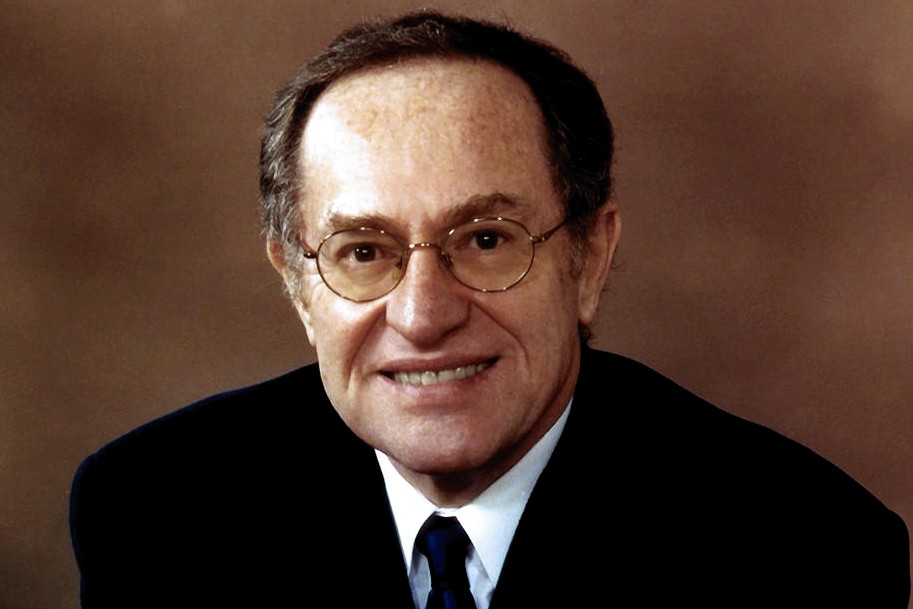
[Above: Harvard “superlawyer” Alan Dershowitz, who conceded yesterday that there IS a strong case]
Getting Back On The Rails
In the United States, with few exceptions, the media has generally accepted the spin from the defense team.
As a consequence, much of the reporting has been shallow and/or wildly inaccurate. These errors have compounded over time, which leads to a situation where the American media was completely unprepared for yesterday’s decision.
As someone who has read through all of the available court documents and much of the media and who has more than 25 years’ experience helping national media to understand complex, technical stories, here’s my take on the issues the media should consider as they continue to write about this case:
Please click here for more
Tuesday, March 26, 2013
Tuesday: Elite First Criminal Section Of Italian Supreme Court Annuls The 2011 Appeal Verdict
Posted by Our Main Posters
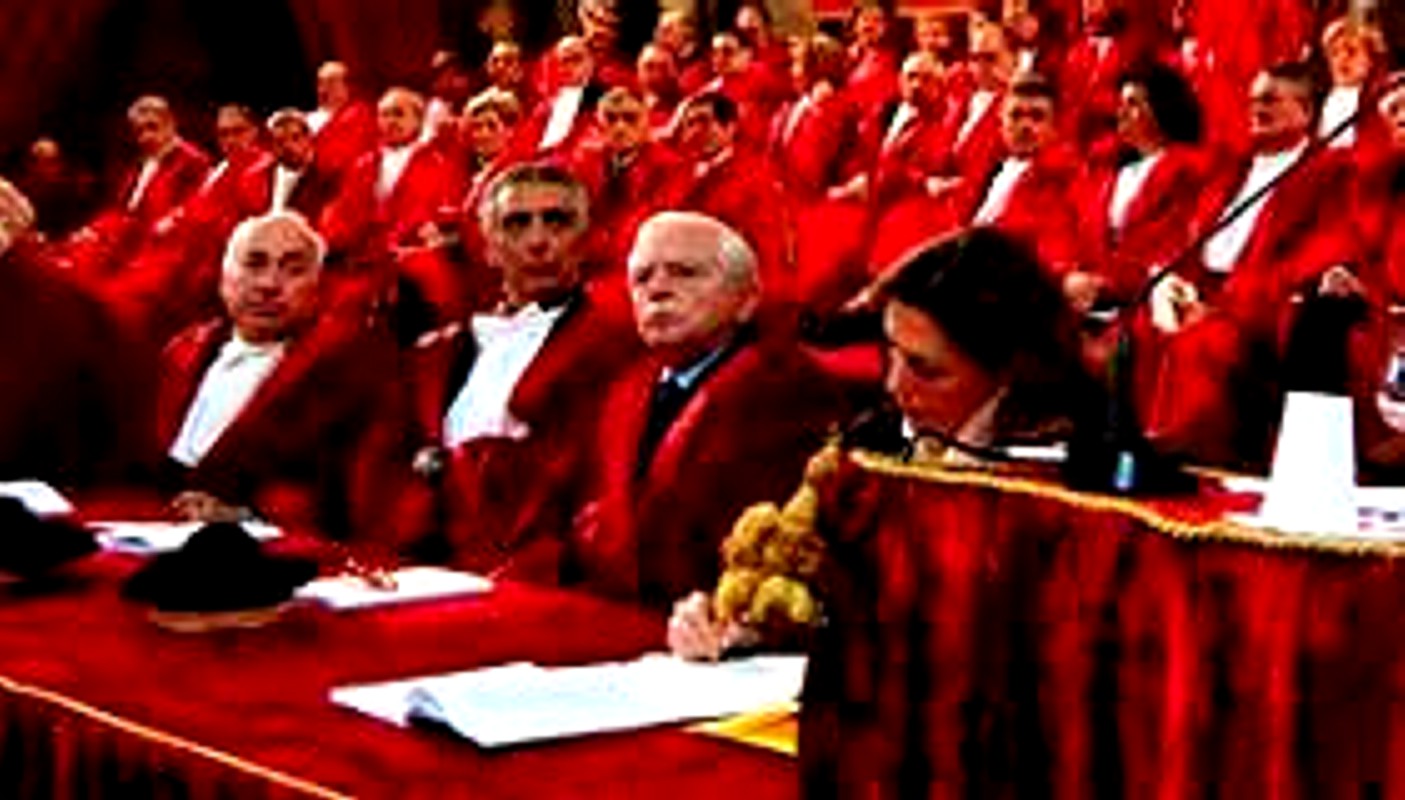
[Above: Some of the judges of the First Criminal Section hearing another recent case, with other sections behind]
Report one
@andreavogt Breaking: high court has anulled acquittals and a retrial has been ordered in #amandaknox case.
Report two
From the New York Times report Italy’s highest court on Tuesday overturned a previous acquittal and ordered a new trial in the sensational case of Amanda Knox, an American exchange student accused of murdering her roommate, Meredith Kercher of Britain, in 2007.
The ruling offered a further dramatic turn in a long-running case that has fascinated many people in the United states, Britain and the rest of Europe. But the full implications of the ruling were unclear, particularly the question of whether Ms. Knox would return voluntarily from the United States or be extradited to face new hearings.
Report three
Andrea Vogt in the Seattle PI. In a stunning turn around of one of Europe’s most closely watched murder trials, Italy’s Court of Cassation on Tuesday annulled the acquittals of Amanda Knox and Raffaele Sollecito and ordered two to stand trial again on appeal.
The decision came after nearly six hours of debate, not just on points of law, but on the evidence too.
This was a rare mix of exceptional violations of law and monumentally illogical reasoning, said Procurator General Luigi Riello in his scathing description of the appeals court’s 2011 decision to acquit. I believe all the elements are there to make sure the final curtain does not drop on this shocking crime, he said.
[Read more, especially on the remarks of AG Riello]
Report four
Further Tweets from Andrea Vogt who was in the courtroom:
Any outcome at appeal retrial in Florence would have to be upheld at Cassation [Rome] level.
No extradition unless formal request is made after a definitive conviction (appeal conviction upheld by high court).
Report five
The news is breaking news on all major U.S. television, including from CNN. The announcement of the Supreme Court arrives at Seattle on the U.S. west coast a little past two in the morning, and in New York at four. “I am not unsatisfied,” said the Attorney General of the Supreme Court Luigi Riello. The lawyer Francesco Maresca, the Kercher family lawyer, welcomed the judgment of annulment by the Supreme Court with a gesture of a fist in victory “It ‘a moral victory and good appeal trial outcome ,” said Maresca. “I had confidence in the Supreme Court” Maresca-explains why there were so many weaknesses of the judgment of the Court of Assizes of Appeal of Perugia.” In tears the victim’s sister, Stephanie said to him. “I’m happy ...,”
More Pervasive Myths We Will Nail In Our Various Hoaxes Series In Due Course
Posted by Our Main Posters

We hope you made it through those amazing Powerpoints on the case for guilt introduced in the post directly below.
We have created around two dozen other Powerpoints also. Here are all Kermit’s Powerpoints and here are all other Powerpoints.
Below are summaries of some more key and very pervasive myths which you can easily spot in today’s media in the US and UK (though never in Italy) which we will nail in depth soon in other longer posts.
The real hard truths can all already be found here on TJMK if you search for them. Please feel free to email us if you need some quick guidance.
1) That Knox and Sollecito maybe face a “retrial”
Rubbish. At most they face a re-run, done properly, of a poorly managed, legally and scientifically incompetent, and highly biased first appeal. It SHOULD look like any US or UK appeal: limited, fast, focusing only on a few points, no consultants, no witnesses, no attempt to run a new first-level trial.
2) That any such “retrial” is a case of double jeopardy
Rubbish. Under Italian law Knox and Sollecito still stand accused of murder and other crimes until the final appeal court (in this case the Supreme Court) signs off, so they were NEVER found “innocent, end of story” at first appeal level. There’s no question of double jeopardy; and the exact-same rules apply in the US.
3) That Amanda Knox was forced into “confessing”
Rubbish. This is the misleading label for her framing of Patrick Lumumba. She spilled the beans fast and vociferously (and repeatedly) after Sollecito who was being interrogated in another room sold her out and said she had made him tell lies. Interrogations were short, she had an interpreter, she was not interrogated as a suspect without a lawyer, and she had refreshments.
4) That all the DNA evidence was thrown out by Hellmann
Rubbish. Hellmann (who is now edged out in disgrace) and Zanetti were not criminal judges, and this was their first DNA case. They were totally at sea. By innuendo, two consultants, illegally appointed and ill qualified, tried to make out there was possible contamination. They proved nothing. They ADMITTED Meredith’s DNA was on the big knife and that Sollecito’s DNA was on the bra clasp. There was lots of other incriminating DNA evidence outside Meredith’s door.
5) That “the” prosecutor was rogue, satanist, and out of control.
Rubbish. The lead prosecutor at trial (Mignini) is straight as an arrow and very admired, and has no interest in satanism. His work was checked by a co-prosecutor, other prosecutors, and many judges. He is in line for a major promotion, and has no dark cloud hanging over his head. The Supreme Court TWICE came down strongly in his favor in the part several weeks, and he is about to be promoted to Deputy Chief Prosecutor for the Province of Umbria.
Final warning:
Disregard everything coming from ABC, CNN, and any Seattle TV station. They are highly biased for commercial reasons, they don’t know the case, and they have essentially been serial-lying to the American public.
Monday, March 25, 2013
Nailing Myths #1: In Fact 2009 Trial Was Decisive By US/UK Standards, Evidence Very Powerful Indeed
Posted by Our Main Posters
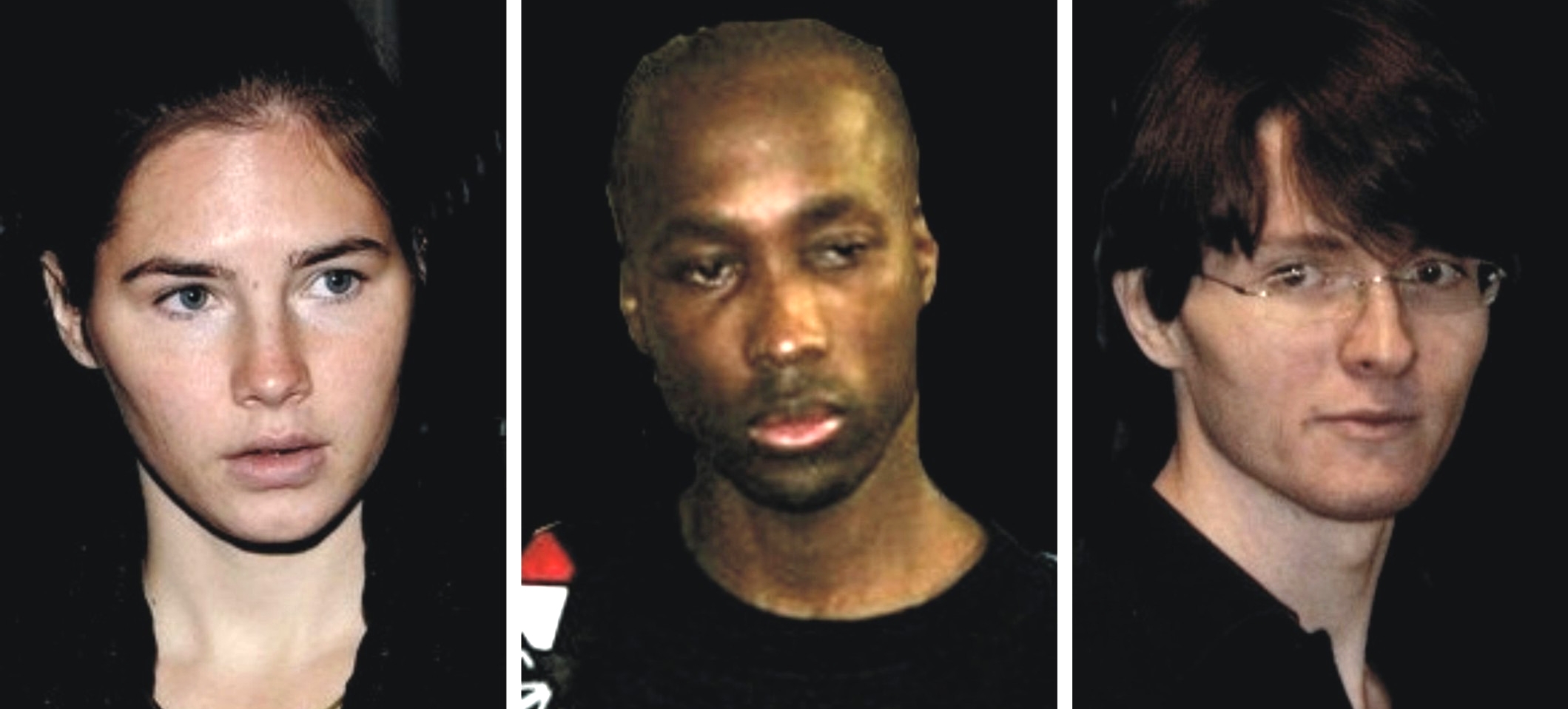
This first post in our new series is a collection of Powerpoint slides summarising the case against.
It was created by our lawyer James Raper with help from Kermit on the content and slides. Please load Powerpoint Viewer if not on your system, and click here for the show.
The Powerpoints consist of 150 slides, the outcome of many hours of work, and should open up in the viewer via most Internet connections in 30 to 60 seconds.
As we continue to point out NOT ONE credible independent lawyer has ever destroyed this case, or come up with a scenario that lets Knox and Sollecito authentically off the hook.
See the header to this post? MANY lawyers are making the comment that in the UK and US this trial would have been the end of the road. No judge in the US or UK would have okayed any appeal. There were never the grounds.
Elite First Criminal Section Of Italian Supreme Court Now Receiving Prosecution Critiques
Posted by Peter Quennell

[Above: Some of the judges of the First Criminal Section hearing another recent case, with other sections behind]
We believe the woman in the image is PIERA MARIA SEVERINA CAPRIOGLIO who is the lead judge (rapporteur) for the case.
Dr Caprioglio is known as a legal expert and hardliner on sex crimes. There is a total of five judges, and the president of the First Section is on the panel. This is unprecedented judicial firepower for a murder case, and seems to be a response to the enormous damage done by the Curt Knox/David Marriott campaign. No American political leader is going to second-guess this.
We are anticipating tweets and news reports out of Italy throughout the day. Andrea Vogt is one who is tweeting from the court. Follow her here.
First report:
@andreavogt #amandaknox discussions starting now in cassation court in Rome. Judge Caprioglio is summarizing the case.
Second report
@andreavogt Procuratore Generale Riello now taking the floor in #amandaknox case, after a 90-minute review of all the arguments.
[Deputy Chief Prosecutor Luigi Riello [image below] holds the same rank that Dr Galati held before he transferred to Perugia to be chief prosecutor there.]
Third report
@andreavogt PG Riello: I believe the judges [Hellmann and Zanetti] lost their way. There are elements that were absolutely not taken into consideration.
Fourth report
@andreavogt PG read from Guede’s letter blaming Sollecito and #amandaknox. Says “strange” that court believed some Guede statements and not others.
Fifth report
@andreavogt The president just curtly asked PG Riello to get on with it, not go into details heard already in first instance and appeal.
Sixth report
@andreavogt PG Riello has concluded, asking that acquittals be anulled and an appeal retrial be set. Half hour break in #amandaknox hearing.
Seventh report
Okay this is us. The proposal to annul the Hellmann-Zanetti outcome has gone viral on Italian media websites. A translation of ACP Riello’s remarks is coming.
Eighth report
@andreavogt Cassation back in session in #amandaknox case, w/ Kercher Atty F. Maresca asking why there wasn’t a full review all forensic evidence.
Ninth report
@andreavogt Giulia Bongiorno has begun def arguments in #amandaknox case: “raff sollecito went to jail for a shoeprint that belonged to Rudy Guede.”
Tenth report
@andreavogt #Bongiorno just pointed out a factual error in the PG’s #amandaknox arguments. Judges listening. She’s a very good orator.
Eleventh report
@andreavogt C. Dalla Vedova urges Cassation to uphold #amandaknox acquittals and overturn slander: “This girl was stressed, confused, pressured.”
Twelvth report
@andreavogt Lawyers say the court of cassation is expected to announce a decision in the #amandaknox case around 21:00.
[Image below: Luigi Riello Deputy Chief Prosecutor Of The Supreme Court]
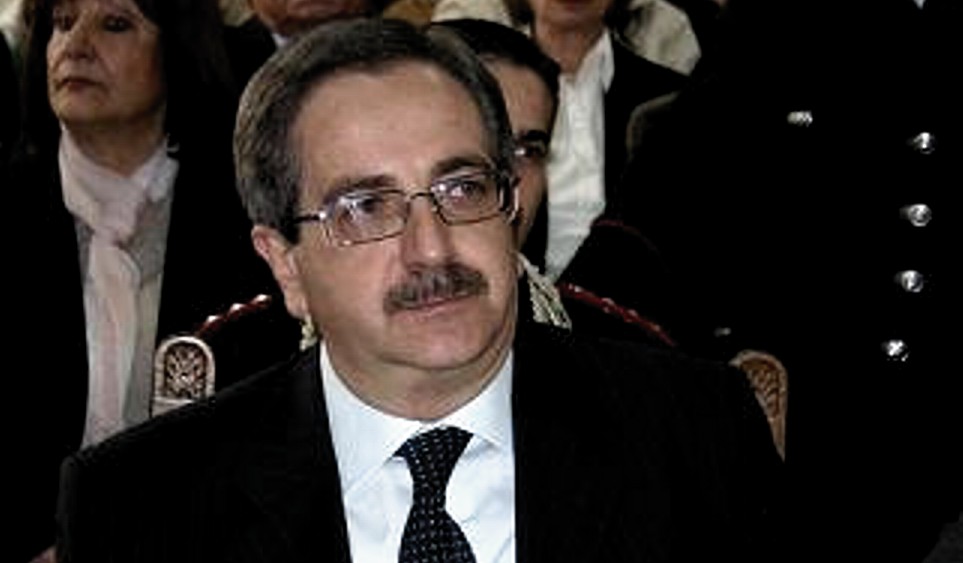
Supreme Court Appeals: A Good Briefing On Tomorow’s Court Proceedings By Italy-Based Andrea Vogt
Posted by Peter Quennell

[Image above: Supreme Court in the foreground and St Peters & Vatican in the background]
Andrea Vogt often tweets very usefully on the case. Her tweet feed is here.
Today’s tweet pointed to this overview here. It is very worth your reading the whole piece.
This is news about three of the judges of Cassation’s elite First Section on Criminal Cases which hasnt yet appeared in the Italian or, UK or US media.
I’ve chosen to not name the magistrates involved in the case until the hearing opens Monday, but for those following closely, here is some brief background on the key judges whose roles are more prominent, based on information I have gleaned from Ministry of Justice documents and “bolletino ufficiale” or public bulletins required to publicly announce personnel changes and events in the judiciary.
The presiding judge is a 72-year old magistrate originally from Naples. Over the years he has dealt with some of Italy’s most high profile crime cases, including the Sarah Scazzi case, as well as the Cassation’s 16-year prison sentence confirmation to Anna Maria Franzoni in the “delitto di Cogne,” the first high-profile case to divide Italy among innocentisti and colpevolisti lines. According to Ministry of Justice documents, the relatrice in the Amanda Knox case is 57-year old female magistrate from Turin.
The procurator general is the figure who has a prosecutor-like function and who presents the case to the panel and suggests what decision should be taken. In this case, the PG is married with two children, has been a judge since 1979 and worked for over two decades in Naples, including several years at the court of appeals there. He is known for his hard line against the clans of the Camorra.
Dr. Giovanni Galati, the Perugia procurator-general leading the recourse of the appeal’s court acquittal ruling is also no stranger to high-profile cases, having worked in the 1980s on the case of Roberto Calvi, the Italian banker murdered and found hanging from Blackfriars Bridge in London in June, 1982
And this further explains the Cassation decision last week which will probably see the hapless Mario Spezi back in prison. We have several more of our own posts pending on this very complex affair.
There was a major development in that case earlier this week, when a separate section of the Cassation court ruled that the decades- old Narducci case, which Mignini had been ridiculed for pursuing, be sensationally re-opened.
The ruling gives new credence to Mignini’s much-maligned theory that there had been a body swap and cover up in the death of the Perugia doctor found in Lake Trasimeno and alleged to be involved in the Monster of Florence case.
Mario Spezi is among those whose acquittals were overturned this week and who has been called by the high court to stand trial. Spezi’s alleged crime is calunnia, for suggesting Antonio Vinci was the real killer (his book marries this theory and it is the charge over which he was originally taken into custody in 2006). It appears there are still a few chapters to be written.
Spezi has one definitive defamation conviction from the 1980s, and in the last two years, courts in Perugia and Florence handed down other convictions. He also faces trials in Padua, Milan and Perugia: all related to allegedly false or defamatory declarations in the Monster of Florence case.
Saturday, March 23, 2013
The Hellmann-Zanetti Appeal Court’s DNA Consultancy Looks Even Worse In Face Of The Latest Science
Posted by Fly By Night

[Above: images of typical modern analysis DNA facilities similar to Dr Stefanoni’s in Rome]
The Galati appeal to Cassation comes down very strongly against the work and conclusions of the appeal court’s DNA consultants Vecchiotti and Conti.
Dr. Galati argues that the consultancy should never have happened at appeal level, that its methods were slipshod and out of date, that its conclusions were mainly innuendo that left the prosecution case untouched, and that the consultants should not have refused to test a remaining sample from the large knife collected at Sollecito’s place.
In July 2011, about the midpoint of the appeal trial, I took strong issue with the C&V science and essentially mirrored in advance what Dr. Galati would argue to Cassation nearly a year later. Many other TJMK posters including our legal posters James Raper and Cardiol took issue with legal and other aspects.
With a Supreme Court ruling on the 2nd level (first appeal level) outcome scheduled for early next week, it’s the perfect time to re-examine the role of DNA in that outcome against the latest science. I want to include some excellent observations from our contributing poster “Thoughtful” as expressed in her recently published book Math on Trial.
I’ll start off with an overview of the science of DNA analysis and describe recent developments in analysis approaches, techniques and capabilities. Incidentally, one of my resources for this information is a chapter in “DNA Electrophoresis Protocols for Forensic Genetics” published shortly after the Hellmann verdict for the first appeal (circa early 2012); a chapter in which Carla Vecchiotti is cited as providing technical assistance.
Given Vecchiotti’s involvement in recent academic publications we can be certain that at the time of the Hellmann verdict Vecchiotti was well aware of the rapidly evolving and improving nature of DNA testing procedures and capabilities. And in contrast to her courtroom allegations that Dr. Stefanoni had not followed “internationally established forensic science standards” in her DNA analysis techniques, Vecchiotti has recently contributed to sources claiming that today’s critical challenge is to develop general guidelines for DNA evaluation and promulgate clear and universal laboratory practices while recognizing that a multitude of labs exist, each with its own specific protocols and personnel.
We will return to the Conti-Vecchiotti report shortly, but first let’s have a quick look at the history and state-of-the-art of DNA analysis.
Brief History of DNA Testing
The literature reveals that the USA has never been at the forefront of forensic DNA analysis. The first court cases to successfully employ DNA “fingerprinting” techniques occurred in England during the mid 1980s. A case involving a double rape/homicide of teenage girls in 1986 turned out to be prophetic in that it involved the first use of DNA to exonerate an innocent suspect and also was the first to apply DNA “databases”, issues which still give rise to disputes nearly 30 years later.
Over time, a variety of procedures were developed to extract DNA from biological samples but all worked on the same basic principle of breaching individual cell walls, removing the protein surrounding the DNA, isolating the DNA, and finishing with the purification and quantification of the DNA.
An important milestone in DNA fingerprinting was the development of the Polymerase Chain Reaction (PCR) in 1985. The PCR quickly became an important analytical method for forensic samples because of its sensitivity, specificity, rapid analysis, and ease of automation. PCR amplification technology permitted the analysis of forensic samples with low quantities (less than 1 ng) of extracted DNA, unlike earlier methods that required at least 50 ng.
While PCR was far more sensitive than earlier procedures, problems with mixed DNA samples and DNA degradation led to the use of genetic markers known as Short Tandem Repeats (STR). STR analyses were fast and reactions could be multiplexed permitting multiple loci to be amplified in a single run.
In 1997 the Federal Bureau of Investigation (FBI) Laboratory in the USA launched an effort to establish a set of 13 core STR loci for use within a national DNA database known as CODIS (Combined DNA Index System). Similar sets of STR markers had already been selected by the European Union and elsewhere but, in general, a DNA profile obtained using 12 or more STR loci was found to yield a composite genotype frequency of less than 1 in a quadrillion. This high degree of accuracy results from the hereditary nature of STR distribution and enables a very powerful method for biological identifications.
STR typing of extracted DNA has traditionally been very sensitive to the quantity of input DNA with ideal levels ranging from 0.5 to 2 ng. Either too little or too much DNA could produce imbalanced amplification results resulting in incomprehensible outcomes. The STR process is further complicated by “stutter” in the interpretation of multiple contributor DNA samples. Stutter is an artifact of the PCR process that produces “false alleles” one repeat shorter than a primary allele.
In recent years DNA analysis techniques have evolved rapidly as equipment manufacturers upgrade STR systems to tolerate even the smallest of samples and samples that have been highly degraded. The improved sensitivity of today’s STR kits along with the development of new strategies for the amplification of low levels of DNA now allows samples which previously could not be analyzed to produce viable results.
Low-level DNA samples often contain mixtures of DNA, which has complicated the detection and interpretation process due to stochastic sampling effects that include peak imbalance, enhanced stutter, allele loss (allele drop-out), and un-attributable alleles (allele drop-in). With this in mind, strict guidelines have been developed including a careful determination of analytical thresholds and the use of replicate analyses in a profile to properly interpret low-level mixed-DNA samples. More importantly, new analytical techniques such as laser micro-dissection and fluorescence in-situ hybridization have been developed enabling the identification, capture, and amplification of DNA from individual cells prior to “electrophoresis”, eliminating the problem of mixed profiles altogether.
In addition to today’s far more precise DNA analysis machines and methods there are also compelling arguments for the use of statistical or probabilistic models within the DNA analysis process to augment traditional “consensus allele” electropherogram evaluation approaches. In short, the efforts of both scientists and statisticians are now creating powerful next generation approaches to DNA analyses as we progress through a second decade of highly successful STR typing methodologies.
Logic and Science on Trial
In my 2011 report I challenged Carla Vecchiotti’s contention that Dr. Stefanoni had not followed “internationally established forensic science standards” in her DNA analysis techniques. Vecchiotti herself has conceded to the challenge through her contributions to publications that clearly describe a need to develop generally accepted guidelines for DNA evaluation and to create clear and universal laboratory practices that can be accepted by the diverse population of analytical labs currently operating under divergent operational protocols, all under the direction of professional and expert personnel.
In her excellent and recently published Math on Trial book, contributing poster “Thoughtful” accurately describes how DNA analysis expert Dr. Patrizia Stefanoni proceeded in her laboratory analysis of a small DNA sample found on the blade of a knife confiscated from Raffaele Sollecito’s apartment. Not having what she felt was a sufficient sample to divide for replication of her analysis Dr. Stefanoni took the chance of running her entire sample in a single run.
As is typical of all DNA analyses, Stefanoni proceeded to amplify the results to a point where an electropherogram would reveal meaningful “peaks” and found that a resultant 13 pairs of peaks corresponded precisely to peaks derived from a known sample of Meredith Kercher’s DNA!
In this case it is pointless to attempt to argue that Stefanoni somehow exceeded the amplification limits of her equipment. As outlined in the DNA discussion above, the typical problems associated with an amplification of low levels of DNA are related to peak imbalances, enhanced stutter, allele drop-outs, or allele drop-ins. In this case there was nothing but a perfect match for Meredith that even Carla Vecchiotti and Stefano Conti could not deny in court.
Stefanoni had clearly identified an identical match for Meredith’s DNA on the blade of Sollecito’s kitchen knife, leaving Vecchiotti and Conti no other option than to argue for “contamination” in court. However, it was convincingly demonstrated by Stefanoni and all evidence handlers that from knife collection through laboratory analysis no reasonable opportunity for contamination with Meredith’s DNA existed.
In the first appeal trial, Judge Hellmann was thus presented with exceptionally compelling evidence that Meredith’s DNA was in fact found on the alleged murder weapon that had been confiscated from Raffaele Sollecito’s apartment. Astonishingly, Hellmann rejected this evidence on an expressed assumption of non-compliance with testing techniques established by international scientific community standards; compliance standards that Vecchioti herself admits do not exist via recent academic and scientific publications as discussed above.
As “Thoughtful” carefully explains in Math on Trial, Hellmann’s faulty reasoning in excluding the knife evidence did not end there. Hellmann provided Vecchiotti and Conti with an opportunity to retest any remaining DNA on the knife if they felt it was warranted. Vecchiotti and Conti declined to perform any retests on the basis that that only a few cells might still exist on the knife, thus invalidating any potential results according to a false assumption that “international testing standards” somehow prohibited such low-level DNA tests even though, as outlined in the DNA discussion above, single-cell DNA analysis had at that time already become an acceptable possibility and Vecchiotti knew it.
Hellmann, however, accepted Vecchiotti and Conti’s reasoning by essentially stating that repeating an “invalid” DNA analysis procedure twice can do nothing towards resolving a DNA identification problem because two wrongs do not make a right. In Math on Trial, “Thoughtful” artfully explains the complete failure of logic of Hellmann’s line of reasoning. Hellmann claims that running an experiment independently two separate times and obtaining the same result each time can do absolutely nothing towards increasing the assurance of reliability for an event.
However, “Thoughtful” describes how successfully repeating Stefanoni’s low-level DNA analysis technique could easily carry a probabilistic result from a “not beyond a reasonable doubt” percentage range to a highly convincing 98.5% or higher probability. “Thoughtful’s” arguments in Math on Trial are completely in line with today’s efforts to embed statistical and probabilistic models within the DNA analysis process for a much higher precision and accuracy standard.
Conclusions
In 2011 I concluded that Vecchiotti and Conti’s expert report findings actually boiled down to two primary debates: (1) Issues surrounding the small sample (Low Copy Number ““ LCN) DNA analysis techniques employed by Dr. Stefanoni, and (2) Issues surrounding the probability of excluding all possible sources of contamination from the evidence.
In 2013, on the eve of the Court of Cassation ruling on the first appeal outcomes of the Meredith Kercher murder trial, it appears to me that all issues related to DNA analysis and contamination have been powerfully addressed by both the prosecution and “best available science” considerations.
The errors in Judge Hellmann’s logic and reasoning that set Amanda Knox and Raffaele Sollecito free have been shown to be plentiful and astounding, as evidenced by the few DNA related examples that have been examined in this report. In light of all of the above and the powerful legal arguments raised by the Galati appeal to Cassation, it seems that there can be no other option than to send this appeal outcome back for a thorough lower court re-evaluation.

